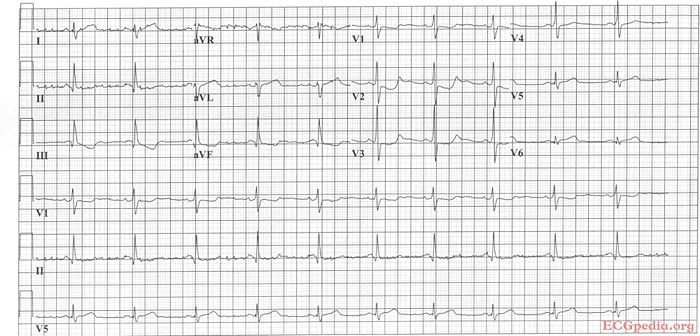Answer MI 5
| This page is part of Cases and Examples |
Where is this myocardial infarction located?

Answer
Culprit lesion: RCX
- sinus rhythm
- about 60/min
- normal conduction
- intermediate axis
- normal p wave morphology
- No pathologic Q or LVH. Tall R in V2, V3.
- ST depression in V2, V3. Also depression in III and AVF. Some elevation in I and AVL.
- Conclusion: Postero-lateral MI caused by an RCX occlusion.
Note! The high frequency vibration that is most clearly seen in lead AVR (with a frequency of > 300/min) is an artefact and not a suprvaventricular tachycardia. In SVT, there would be no P waves.
It is quite unusual that lead III shows depression in a RCX infarction. Apparently the inferior part is not much affected by this infarction.